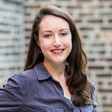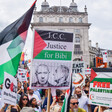Arts and Culture 28 January 2015

From the Awajan photography series organized by Naqab Youth for Human Rights.
A new traveling photography exhibition highlights the struggle of Palestinian Bedouin communities in the Naqab (Negev) desert, located in the south of present-day Israel.
The photos — taken by youth in Bedouin villages — document the poor conditions in these communities. Unrecognized or underserved by the state, the villages lack basic infrastructure such as water, electricity, health care, schools and other services.
Bedouin communities are traditionally semi-nomadic and since the declaration of the State of Israel in 1948, the Bedouins in the Naqab, who now number an estimated 170,000, have been subjected to forced urbanization.
The photography project is part of the community organization Baladna’s Naqab Youth for Human Rights campaign, which “supports a new generation of Arab Bedouin youth in the Naqab to defend their human rights through photography and film,” according to the group.
Four youth groups, including fifty participants, from four different villages in the Naqab have so far participated in the program, and their work was displayed in the city of Nazareth last month.
Balada has made the photos available electronically with accompanying materials in Arabic and English so that groups around the world can organize their own exhibitions to raise awareness about the human rights struggle in Naqab Bedouin communities. (Those interested in hosting the exhibition can contact fund@baladnayouth.org or call +972(0)48 523 035 for more information.)
Rights violations
Protests erupted in the Naqab Bedouin town of Rahat earlier this month following the police slaying of 22-year-old Sami Jaar. Another resident, Sami Ziadna, died of his injuries after police fired tear gas on Jaar’s funeral.
The two men’s deaths sparked demonstrations throughout Palestinian communities in present-day Israel. Approximately 1.7 million Palestinians carry Israeli citizenship but are subjected to systematic discrimination, including access to land and education.
In late 2013, sustained protest halted a government scheme known as the Prawer Plan that would have displaced tens of thousands of Palestinian Bedouins from the Naqab.
But home demolitions have continued since then — the unrecognized village of al-Araqib was leveled by Israel for the eightieth time last week.
The rights violations resisted by Bedouins in the Naqab today are a continuation of the ethnic cleansing of historic Palestine since the 1948 era — what Palestinians refer to as the Nakba or “catastrophe.”
Forced transfer operations in the Naqab began in July 1948 and pushed 90 percent of the Palestinian Bedouin population outside the boundaries of the new state, according to historian Ilan Pappe.
Fourteen Palestinian Bedouin farmers near al-Araqib village were rounded up in an Israeli army truck and summarily executed in September 1948, as Nasser Rego recently recounted for The Electronic Intifada.
“Local residents say the al-Araqib massacre of 1948 was motivated by the desire to instill fear and prompt their flight,” according to Rego.
Photo exhibition
The photos included in the Naqab Youth for Human Rights exhibition center around these themes of land confiscation, forcible transfer, environmental destruction and state discrimination.
The collection of images taken by youth from Awajan village narrates the imminent threat of forcible transfer from their community to make way for a forest of non-indigenous trees planted by the Jewish National Fund (JNF).


Above photos from the Awajan series
For decades, ethnically cleansed Palestinian villages have been planted over with pine trees by the JNF.
As environmental expert Alice Gray told The Electronic Intifada contributor Arwa Aburawa in 2010, “Trees are used by the JNF to actualize their control over tracts of land and prevent the Bedouin from using it.”
Meanwhile, Gray added, “The state has repeatedly destroyed Bedouin crops of all sorts — they used to spray them with Round-Up [a broad-spectrum herbicide] out of helicopters until too many were hospitalized with chemical poisoning and the [high court] forbade it.”




Above photos from the Wadi Nam series
Planting a tree of hope is the theme of the Wadi Nam photo series, which focuses on a one-room, tin-roofed school. Even this modest house of education is treated as a threat to the state, which has attempted to close it and transfer its students to a school in a different village, according to the exhibition materials.

From the Siriya series
Another photo set, titled “H2O,” takes up the lack of water infrastructure in the unrecognized village of Siriya while Israel exploits the area’s natural resources.


Above photos from the Aum Btim series
The final series — called “The Trick” — exposes the deception of official state recognition of Aum Btin village while in reality, the community of 5,000 has been waiting for ten years to be added to the state’s electricity grid. The environment of the surrounding valley has meanwhile been spoiled by waste from the nearby Israeli settlements.
All images courtesy of Baladna.






Comments
I was brought with lies!
Permalink Jane Zacher replied on
As a Jewish child, we were told by the Israeli's at Bond fund raising events, that they "turned the desert into water and created an agrirain society". Little did I know, it was from stolen lands, and the "irrigation methods", came from stolen water. I went to the Occupied area in 1985, to "enrich my Judasim". Not only was a traumatized to see the way the IDF, treated anyone that was Arab, but we ate with the Bedoiuns, who seemed gracious and happy to have Jews eat with them. I remembered we were all sick afterwards, and can't blame anyone, but believe it was my God, punishing us, for the killings of these beautiful people. No wonder they were "gracious" - they were scared out of their minds, by the Israeli's. I thank my God, for helping me listen to my heart and stand against Zionism. I NOW STAND ON THE RIGHT SIDE OF HISTORY! Amen,
Jane Zacher
From the Occupied Area of Turtle Island, U.S.A.